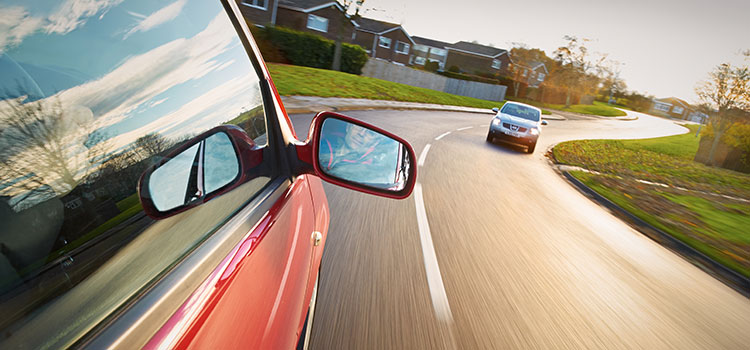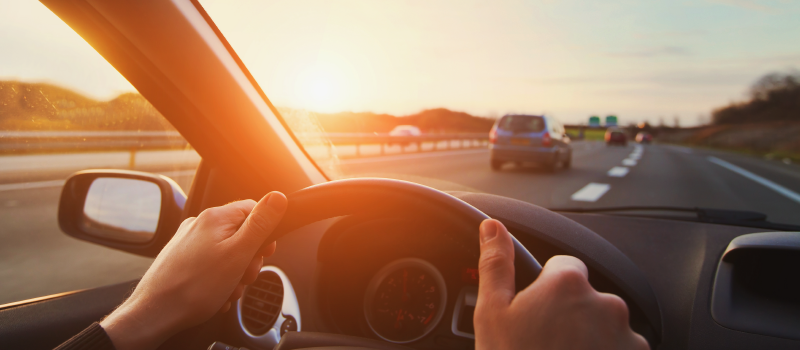
5 useful ways you could be driving less dangerously
17th Mar, 2021
Wait, you’re probably saying, I’m not a dangerous driver. Maybe you’re also saying: I’ve never even had a crash serious enough to scrap my car. And that would be a very fair point, especially since the evidence shows that the majority of UK drivers are in fact very conscientious. (In fact, Britain has some of the safest roads in Europe, second only to Sweden.)
But even the most conscientious of us can still have bad driving habits, or little things that we often fail to do. If we’re unlucky enough, sometimes those tiny mistakes can have massive consequences. Here, we’ve highlighted some small but useful changes you can make to your driving, all of which can make things a whole lot safer for yourself and others around you.
Do the Dutch Reach
It might sound like an early naughties dance craze that never quite caught on, but the Dutch Reach is essentially a useful way for drivers to reduce off the risk of a near-constant hazard for cyclists – car doors that open suddenly on busy streets.
Using the Dutch Reach simply means opening your car door with the hand furthest away from it (so that’s your left hand as a driver). This movement naturally forces you to twist your body and look over your shoulder into your blindspot, so you can spot any oncoming cyclists. It’s regarded as such an essential manoeuvre that the Department of Transport are considering officially incorporating it into the Highway Code.
Check your blind spots
Now this is something we’re all taught as part of the Highway Code, and normally as part of our driving lessons too. For some reason though, it’s still something that we’re not all as good at doing as we should be. The Highway Code advises checking over your shoulder at your blindspots when you’re merging with traffic, parallel parking, or changing lanes – as well as any other manoeuvre when other road users could be behind you.
It’s also worth remembering that checking your blindspots in this way can protect you physically, legally and financially by helping you to avoid becoming a victim of Crash for Cash scams, in which fraudsters intentionally induce accidents to claim insurance money. A common tactic for these drivers is to try and hang back in their target’s blindspot, before suddenly accelerating out in front of them to cause a crash. Being aware of your blind spots can help you spot this suspicious behaviour much earlier, giving you a better chance of not becoming a victim.
Meanwhile, to avoid getting caught up in innocent (but no less stressful) collisions, the Department for Transport also advocates for making an effort to stay consciously aware of other drivers’ blind spots, and trying to stay out of them where possible.

Leave enough space between you and the car ahead
We know that feeling. Maybe you’re late, or maybe you just want to get home, but the driver in front of you is going so slowly that you wonder if they might be practicing for a parade of some kind. It can be tempting to try and speed up a bit, just to try and give them a bit of a hint, hoping they’ll move. Equally, it can be easy to be driving at a perfectly reasonable speed, and suddenly realise you’re far too close.
But whether it’s done accidentally or deliberately, it’s really important to recognise the dangers posed by tailgating. The Highway Code is really clear on this point: “the safe rule is never to get closer than the overall stopping distance.”
That needs to be a two-second gap at all times between you and the vehicle in front when you’re driving in tunnels or fast-moving roads. When the weather turns unpleasant, that distance needs to lengthen accordingly – to a four-second gap if it’s on wet roads, and even more if it’s snowy or icy. Giving yourself even one extra second to react can make all the difference to whether or not you have an accident.
Check your rear view mirror before you brake hard
When a hazard suddenly emerges ahead, you react instinctively. You have to – by the time you’ve had time to consciously consider what’s happening, you could have already crashed. But while some hazards might only permit you literally a few seconds to react, others might happen far enough ahead that you’ve got more time to react.
In these instances, it’s best to try and at least give your rear view mirror a glance to see how hard or softly you can brake, giving the car behind as much time to react as possible – helping you both avoid being caught up in a collision of your own. Now it might seem like a big ask if you’re not used to doing it, but it definitely becomes easier if you’ve left enough space between yourself and the car in front, as per our advice above.
You can also give yourself a bit more time to react by checking your rear view mirror more frequently in environments where you know you have a higher chance of needing to stop suddenly, such as pedestrian crossings or supermarket car parks.
Don’t touch your phone
Seriously. This is one that millions of us are still guilty of breaking on a daily basis, but its impact on safety really can’t be overstated. Sure, your phone is a highly versatile device used for communication, navigation, and entertainment – all in one handy package. But it’s also, crucially, a distraction. Driving while distracted, even for a moment, can all too easily result in some devastating consequences.
The law is again really clear on this point, and since a legal loophole was recently closed, now even touching your phone is illegal when you’re sat at the wheel – so you don’t have to be actively texting or talking on it to be prosecuted.
Lots of modern phones have safe-driving modes programmed into them, but we’d go for the time honoured approach – just switch it to silent or turn it off entirely when you’re driving.
We know that none of these are particularly exciting, and some might take a little while to get yourself into the habit of them, but each one of them could end up making all the difference to saving a life. And let’s be honest, there are few things more important!
Not every monotonous task is quite so vital, like filling out your paperwork when you scrap your car. Happily, that’s exactly what we’re here for at Scrap Car Network. We like to make things as easy and straightforward for you as possible when you scrap your car, and what’s more, you can count on us to get you the very best price.
All you need to do is enter your car reg and postcode into the fields on our site, and we’ll get you an instant online quote before you can say cash for cars. It only takes a few seconds… curious to find out how much your car is worth?